Source: Artnet.
We all know 2020 was a bad year for the art market, which saw the cancellation of virtually every live auction, fair, and exhibition. But just how bad was it? A new study from Art Basel and UBS titled “The Impact of COVID-19 on the Gallery Sector” aims to survey the extent of the damage.
The findings, authored by cultural economist Clare McAndrew, are based on a survey of 795 Modern and contemporary art galleries that were asked how the pandemic affected them in the first six months of the year. The report also presents the findings of a survey of 390 high-net-worth collectors, a research collaboration between McAndrew’s company, Arts Economics, and UBS.
It was conducted this past July, across three major art markets—the US, UK, and Hong Kong—with a particular focus on how the pandemic has changed their interactions with galleries in the art market.
Here are the key findings from the report.
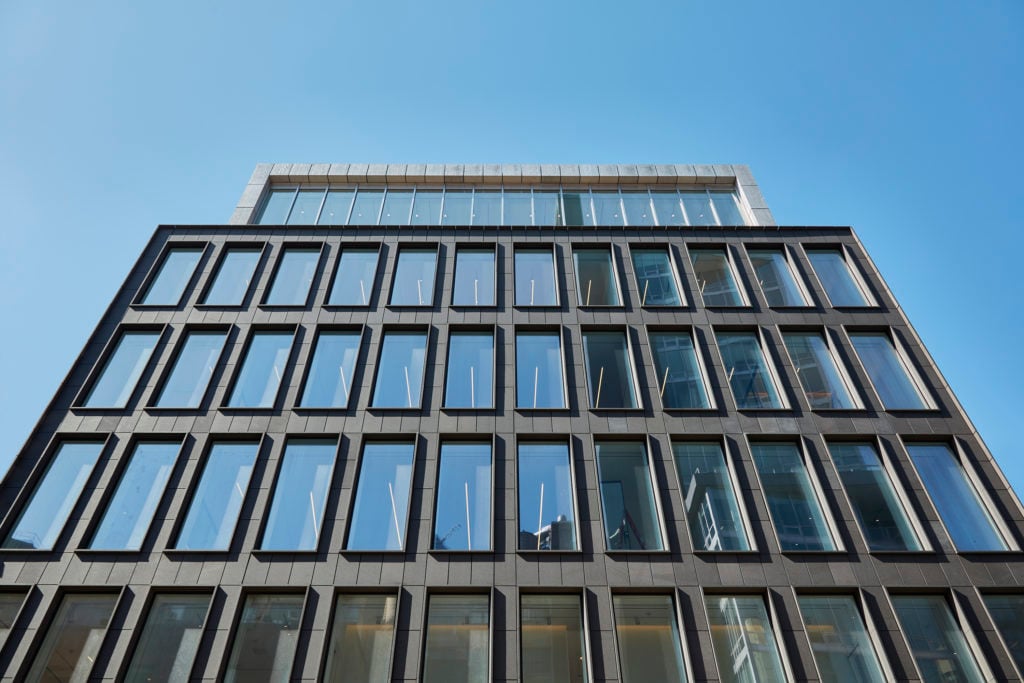
Pace Gallery at 540 West 25th Street, New York. Photography by Thomas Loof, courtesy Pace Gallery.
1. Even the Biggest Galleries Had to Shed Staff
It’s no secret that most galleries already have fairly lean staff structures. Nonetheless, many had to furlough or permanently lay off employees as a result of the pandemic. One third of the galleries surveyed downsized during the first half of 2020, shedding an average of four employees, with about half involving full-time employees. The report predicts that more galleries may be at risk of closure before the end of the year, and that others will be in a “more precarious position in 2021, which could pose significant losses to the wider art economy.”
With respect to gallery sales, the pandemic has had and will continue to have an effect, especially given the industry’s reliance on events, travel, and discretionary spending. On average, sales dropped by an average of 36 percent in the first half of 2020 as nearly all galleries (93 percent) closed their physical spaces between January and July—findings that mirror sales trends across luxury goods industries, the report notes.
A range of online offerings and new developments helped galleries to continue making sales despite the physical closures. High-net-worth collectors, in particular, continued buying art through a mix of online and offline channels, according to the surveys. Of these, 75 percent said they purchased art through a gallery.
2. Online Sales Became Instantly Crucial
Despite what’s being described as digital and JPEG fatigue in some art world circles, online sales have been a crucial component for gallery survival in recent months. The share of online sales among the galleries surveyed was 37 percent of total sales in the first half of 2020, up from 10 percent in 2019. Despite having the lowest share in 2019, galleries with the largest turnover showed the highest increase, with those in the $10 million-plus segment rising almost fivefold, to 38 percent.
New buyers accounted for 26 percent of online sales in the first half of the year, while 74 percent were regular clients of the gallery. The high-net-worth collectors’ survey also found little difference in the price level at which younger segments bought online or offline in 2020.
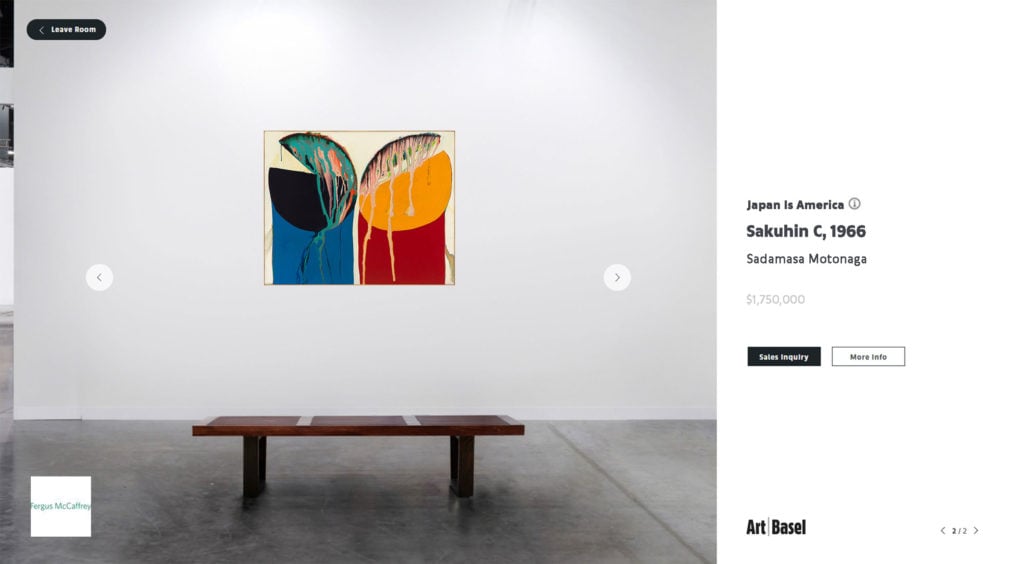
Art Basel’s March 2020 Online Viewing Room, featuring a work from exhibitor Fergus McCaffrey’s exhibition “Japan Is America.” Courtesy of Art Basel.
3. Dealers Ramped Up Their Digital Strategies
Dealers reported using a range of online strategies to maintain liquidity and relationships: 72 percent of the galleries surveyed noted an increase in the online content offered through their websites and other online channels compared to 2019, while 69 percent increased their social-media activity.
Roughly half of the galleries surveyed used online viewing rooms for their galleries—with varying degrees of success. Some felt the field was too crowded and competitive, making it difficult to attract new buyers, while others praised the digital realm as a way of leveling the playing field for smaller and mid-size galleries.
The high-net-worth survey found that 87 percent of the collectors surveyed said they had visited galleries’ online viewing rooms, and 41 percent had used them to buy a work of art.
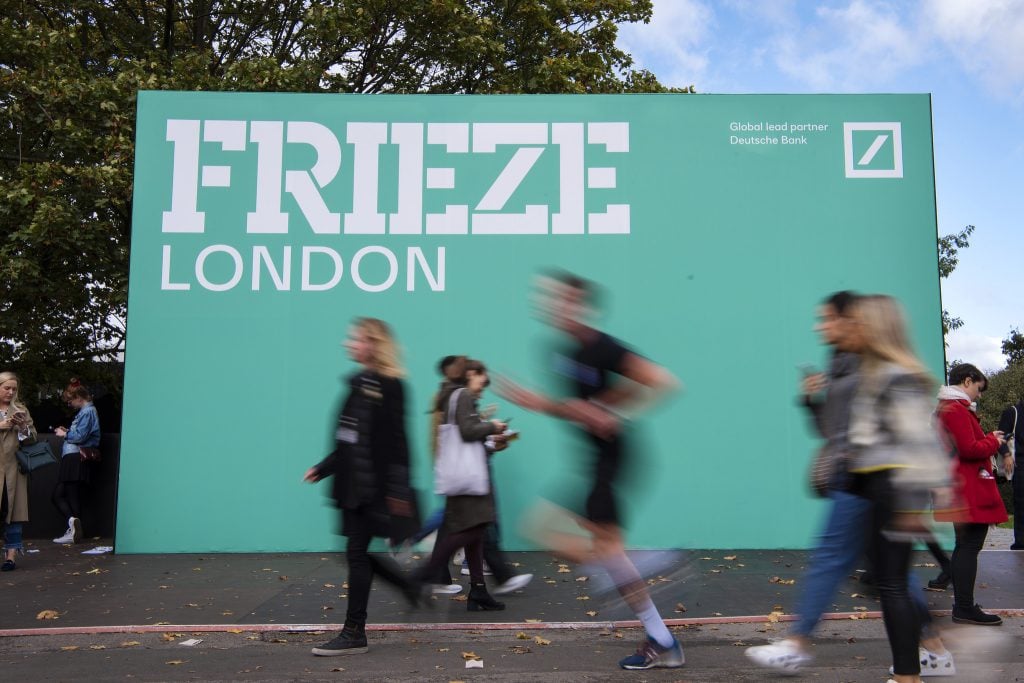
Frieze London 2019. Photo by Linda Nylind. Courtesy of Linda Nylind/Frieze.
4. Canceled Art Fairs Caused Sales to Plummet
The fact that so many major fairs were canceled this year, starting with Art Basel Hong Kong in March (and now all three Basel fairs have been canceled), meant that sales made through this format were drastically reduced, down from 46 percent of total sales in 2019 to just 16 percent in the first half of 2020. The biggest declines were seen at the high end of the sector, according to the report.
Most dealers took advantage of the online viewing rooms organized by art fairs, with 67 percent reporting having used these virtual exhibitions more than they did in 2019. And 85 percent of the high-net-worth collectors surveyed had visited online viewing rooms, while 40 percent said they had purchased works through them.
Price transparency was one of the most highly valued features of the online viewing rooms, with 81 percent of collectors reporting that it was “important or essential” to see a price clearly posted when they were browsing art online.
Dealers said that they plan to reduce the number of fairs they will show at in 2021, with the average dropping to three fairs from four in 2019. Not surprisingly, galleries noted that the feeling of online forums did not compare to the experience of physical fairs, a sentiment shared by the surveyed collectors, with a majority (70 percent) saying they would rather view a work in person than online.
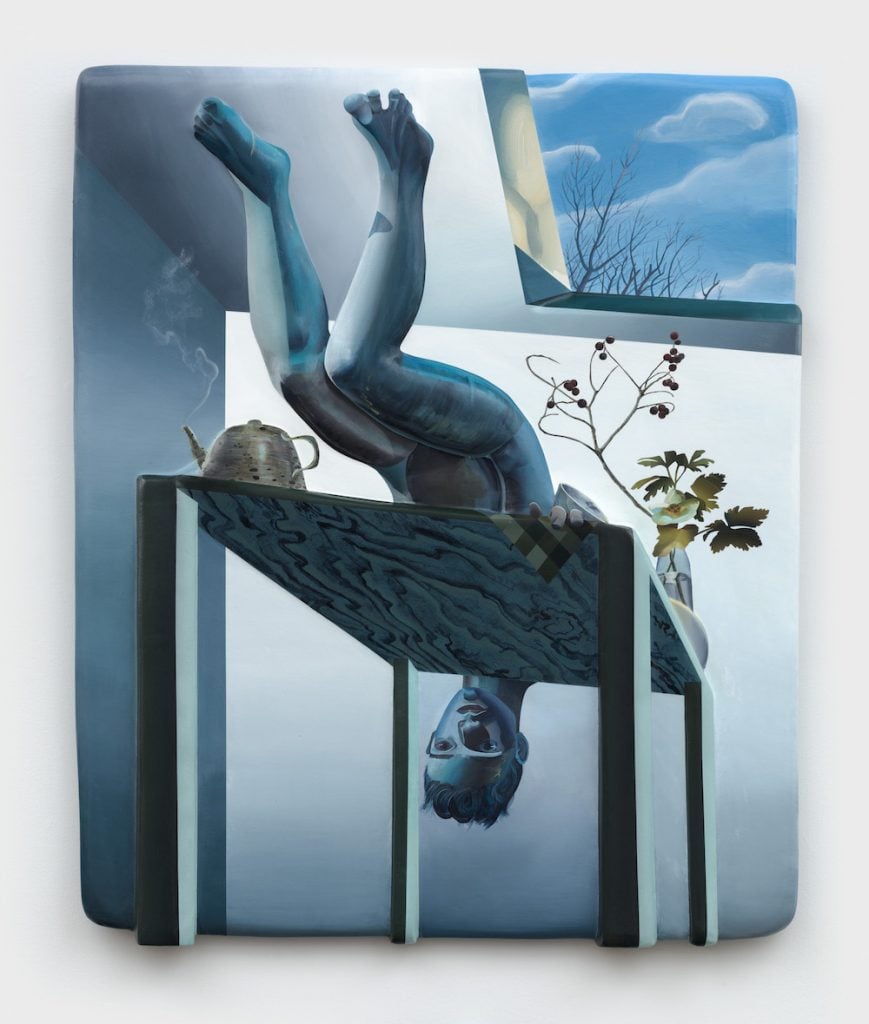
Kyle Dunn, Boy on Table (2020). Image courtesy the artist and P.P.O.W.
5. Galleries Are Tweaking Their Business Models
The health crisis continues to affect how galleries are strategizing and thinking about the future. Galleries reported that their key priorities last year were participating in art fairs and widening the geographical reach of their client base. These priorities shifted dramatically over the first half of 2020 as dealers focused instead on trying to trying to boost online sales, cutting costs to create a path to profitability, and “maintaining relationships with existing clients who were seen to be critical to their survival,” according to the report.
Of the collectors surveyed in the US, the UK, and Hong Kong, the study found that even amid the COVID-19 crisis, 92 percent bought a work of art in the first half of 2020. Further, the value of spending was relatively high: a majority (63 percent) spent more than $100,000, and 13 percent spent more than $1 million.
Meanwhile, the millennial segment had the largest share of high spenders, with 14 percent having spent over $1 million (compared with just 5 percent of boomers). While most collectors were actively working with galleries during the crisis, relatively few (14 percent) were looking for new galleries to work with, and most were staying with those with whom they already had relationships.
“If this applies to a wider collector base, it could make it potentially harder for newer and younger galleries to establish themselves or gain a competitive foothold,” according to the report.
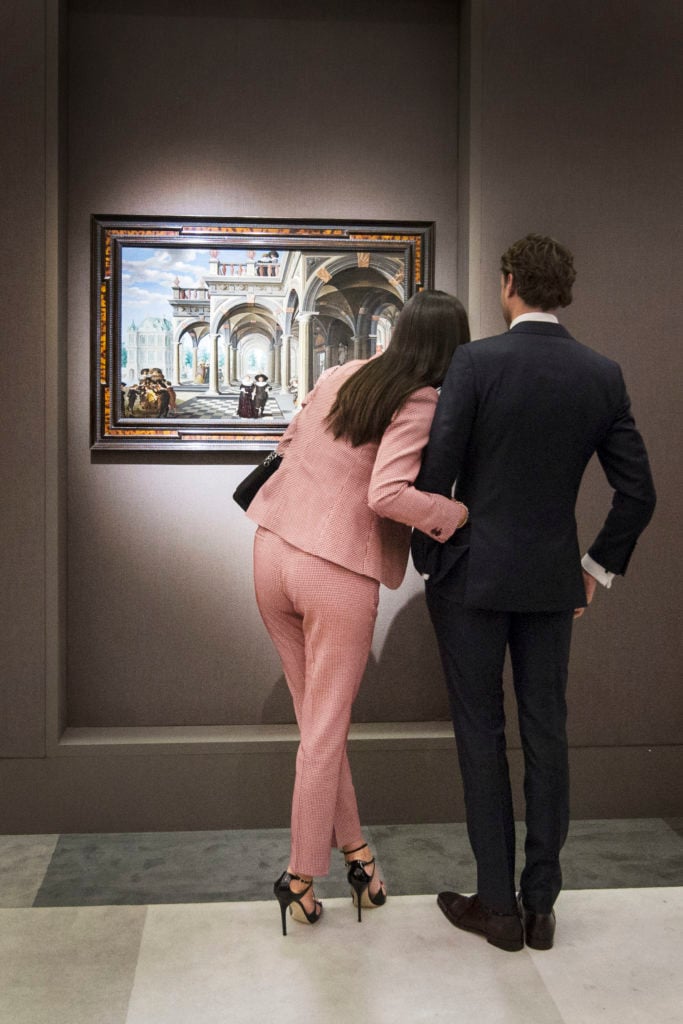
TEFAF Maastricht. Photo by Loraine Bodewes.
6. Young Collectors Are Optimistic About the Future of Art Buying
The majority of galleries said they expected sales to continue to decline for the rest of the year. Just 21 percent said they are expecting an uptick in the second half of 2020. There was more optimism about 2021, but still just under half (45 percent) said they expected sales to increase from this year.
The collectors had a comparatively positive outlook: 59 percent felt that the pandemic had increased their interest in collecting. This feeling was especially strong among younger collectors, with 70 percent of millennials reporting the pandemic had enhanced their interest in collecting art. Over the long term, collectors’ confidence in the art market is advancing across the board.
“Young and wealthier collectors appear to be most optimistic,” the report notes. Over 60 percent of millennial collectors say they’re optimistic about the market’s performance in the next six months to a year, compared to just 24 percent of boomers.








